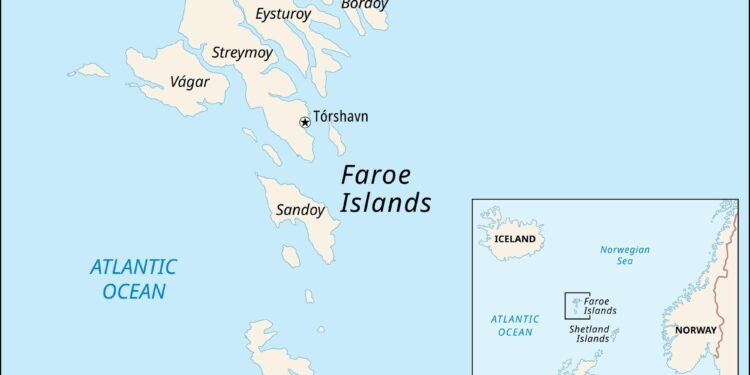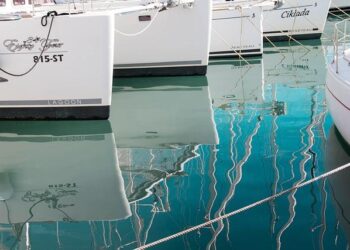Nestled in the North Atlantic Ocean, the Faroe Islands are rapidly gaining recognition as a must-visit destination for adventurous travelers. With their rugged landscapes, dramatic fjords, and untouched natural beauty, these 18 volcanic islands offer an unparalleled road trip experience unlike any other in Europe. National Geographic explores why the Faroe Islands should top your travel list, highlighting their unique blend of wild terrain, rich cultural heritage, and the thrill of discovery along their winding coastal roads. As tourism grows, the Faroe Islands present a rare opportunity to explore one of the world’s last great road trip frontiers before it becomes a mainstream marvel.
Unveiling the Untouched Landscapes That Define the Faroe Islands
Amidst the vastness of the North Atlantic Ocean lies a realm where nature remains remarkably pristine. Towering cliffs draped in emerald, cascading waterfalls hidden within rugged fjords, and endless stretches of wild moorlands characterize this remote archipelago. Far from the usual tourist trails, the islands invite explorers to witness landscapes that have been untouched by mass development – a rare chance to experience raw, unfiltered beauty.
These secluded terrains offer more than just breathtaking vistas; they foster a deep connection to nature’s rhythms. Visitors often find solace in the gentle sounds of seabirds, the brisk ocean breeze, and the mystical fog that rolls over volcanic peaks, creating a cinematic atmosphere that transforms every mile driven into a voyage of discovery.
- Majestic Cliffs: Ideal for photography and birdwatching with dramatic ocean views.
- Twin Waterfalls: Hidden gems accessible via scenic hikes.
- Untrodden Highlands: Perfect for solitude seekers and nature enthusiasts.
- Small Fishing Villages: Where tradition meets the rugged coastline.
| Landscape Type | Key Attraction | Best Season to Visit |
|---|---|---|
| Cliffs & Sea Stacks | Drone Photography | Summer |
| Waterfalls & Fjords | Hiking Trails | Late Spring |
| Highlands & Moors | Wildlife Watching | Autumn |
| Coastal Villages | Cultural Experience | Year-Round |
Navigating Remote Villages and Hidden Coastal Roads for Authentic Experiences
Winding through narrow, cliff-hugging paths and serene fjord-side roads, the Faroe Islands offer more than just breathtaking views-they provide a window into a way of life that has remained largely untouched by time. Travelers venturing beyond the well-trodden routes discover quaint villages where turf-roofed houses nestle amidst dramatic landscapes, and traditions endure through generations. These intimate encounters often lead to heartfelt conversations with locals, who graciously share stories of their island heritage and the rugged environment that shapes their daily existence.
For explorers seeking to immerse themselves in genuine island culture, here are key highlights to anticipate on the road less traveled:
- Hidden coves and secret beaches: Perfect spots for solitary reflection and birdwatching.
- Sheep-grazed hillsides: Scenic vistas punctuated by iconic Faroese sheep flocks roaming freely.
- Historic stone churches: Silent witnesses to centuries-old spiritual traditions.
- Local cafés and artisan workshops: Where handcrafted wool products and fresh seafood dishes await discovery.
| Village | Distance from TĂłrshavn | Unique Feature |
|---|---|---|
| GjĂłgv | 66 km | Natural sea harbor carved in basalt |
| Saksun | 70 km | Stone church and tidal lagoon |
| MĂşli | 50 km | Remote settlement surrounded by steep cliffs |
Essential Tips for Road Tripping Safely Through Variable Weather and Rugged Terrain
Exploring the Faroe Islands by road demands careful preparation due to its ever-changing weather conditions and rugged landscapes. Always keep a close eye on local weather forecasts, as sudden fog, rain, or gusty winds can transform a scenic drive into a challenging adventure. Equipping your vehicle with sturdy tires and ensuring your brakes are in top condition are crucial steps before setting off. Carrying essential supplies such as a fully charged phone, warm clothing, and additional fuel can make all the difference, especially when traveling through remote areas where services may be sparse.
Practical measures to enhance your safety include:
- Driving cautiously on narrow, winding roads and using lower gears on steep inclines
- Respecting local speed limits and road signs, particularly near cliffs and coastal routes
- Planning your itinerary to allow extra time for stops and unexpected changes
- Keeping emergency contacts and maps easily accessible
| Weather Condition | Recommended Action |
|---|---|
| Heavy Fog | Use low beam headlights, reduce speed, and avoid sudden braking |
| Strong Winds | Hold steering wheel firmly and avoid exposed bridges |
| Rain | Maintain safe distance and check tire tread depth |
| Ice or Frost | Drive slowly, use winter tires, and avoid sharp turns |
In Retrospect
In a world brimming with travel options, the Faroe Islands offer a uniquely captivating blend of rugged landscapes, rich culture, and unspoiled natural beauty. As National Geographic highlights, this North Atlantic archipelago stands out not just for its dramatic scenery but also for the immersive road trip experience it promises. Whether you’re chasing mist-shrouded cliffs, quaint villages, or panoramic coastal drives, the Faroe Islands invite adventurers to explore at their own pace. For those seeking a destination that combines off-the-beaten-path charm with world-class vistas, the Faroe Islands are a compelling choice for your next road trip.
















